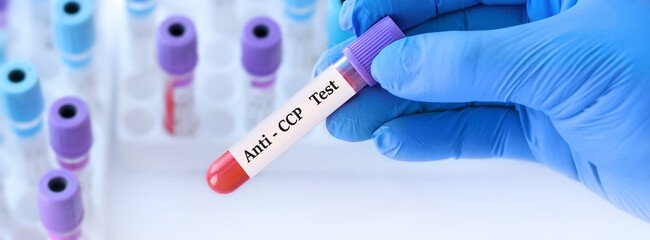TG tubes, or Thixotropic Gel tubes, are a key component in laboratory diagnostics, specifically used in the collection and separation of blood samples. These specialized tubes play an important role in ensuring the accuracy and reliability of blood test results by providing a way to separate serum or plasma from blood cells. In this article, we will explore what TG tubes are, how they work, and their importance in medical diagnostics.
What Are TG Tubes?
TG tubes are blood collection tubes that contain a thixotropic gel, a substance that changes consistency based on movement. When the tube is stationary, the gel remains solid, but when centrifuged, it becomes liquid and separates the blood cells from the serum or plasma. This gel barrier forms between the cellular components and the serum or plasma, allowing for easy extraction of the desired component for testing.
How TG Tubes Work
When blood is drawn into a TG tube, it is initially a mixture of red blood cells, white blood cells, platelets, and plasma or serum. After the blood sample is taken, the tube is placed in a centrifuge, a machine that spins the tube at high speeds. The force generated by the centrifuge causes the heavier blood cells to move to the bottom of the tube while the lighter serum or plasma rises to the top.
During this process, the thixotropic gel, which is positioned between the cellular components and the serum/plasma, liquefies and creates a physical barrier. Once the centrifuge stops, the gel solidifies again, preventing the different blood components from mixing. This clear separation ensures that the serum or plasma can be easily extracted for testing.
Types of TG Tubes
There are two primary types of TG tubes, which are used depending on the type of blood test required:
Serum Separator Tubes (SST): These tubes are used when the test requires serum, which is the liquid portion of the blood that remains after clotting has occurred. Serum is commonly used for chemistry tests, such as glucose or electrolyte levels.
Plasma Separator Tubes (PST): These tubes are used when plasma is needed, which is the liquid portion of blood before clotting. Plasma is often used in coagulation studies and certain types of metabolic tests.
Both types of TG tubes contain thixotropic gel, but they are treated differently based on the blood component being separated. SST tubes allow the blood to clot before separation, while PST tubes contain anticoagulants to prevent clotting.
Importance of TG Tubes in Diagnostics
The use of TG tubes is critical in ensuring the integrity and reliability of blood tests. The gel barrier created by the tube prevents blood cells from mixing with serum or plasma, which could otherwise interfere with test results. Accurate separation of these components allows laboratories to perform a wide range of tests, including metabolic panels, hormone levels, and coagulation studies.
In addition, TG tubes simplify the handling of blood samples. Once the sample has been centrifuged, the clear separation makes it easier for technicians to extract the serum or plasma without risking contamination. This is especially important in large diagnostic labs where hundreds of blood samples may be processed daily.
How to Use TG Tubes
Using TG tubes properly is essential for accurate results. The steps are as follows:
Collecting the Blood Sample: Blood is drawn from the patient using a needle and is immediately transferred into the TG tube.
Handling the Sample: After the blood is collected, the tube should be inverted several times to ensure that the sample mixes properly with any additives (in the case of PST tubes).
Centrifugation: The TG tube is then placed in a centrifuge for a specific amount of time, depending on the type of test and the equipment used. This process separates the blood components and activates the thixotropic gel.
Extraction: Once the blood has been centrifuged, the serum or plasma can be easily extracted from the top of the tube for testing.
Common Applications of TG Tubes
TG tubes are used in a variety of medical settings, including hospitals, clinics, and research laboratories. Some of the most common tests performed using TG tubes include:
Metabolic Panels: To assess a patient’s overall metabolic health by measuring substances like glucose, calcium, and electrolytes in the blood.
Hormone Testing: To measure levels of hormones like testosterone, estrogen, and thyroid hormones, which can be indicative of endocrine disorders.
Infectious Disease Testing: Blood samples in TG tubes are often used to detect infections, including viral and bacterial pathogens.
Coagulation Studies: Plasma separated using PST tubes can be used to test how well a patient’s blood clots, which is important in diagnosing bleeding disorders.
Advantages of TG Tubes
T G tubes offer several benefits in clinical diagnostics, making them a preferred choice for many laboratories:
Efficient Separation: The thixotropic gel ensures rapid and reliable separation of blood components, improving the speed and accuracy of tests.
Reduced Contamination: The gel barrier prevents contamination of serum or plasma by cellular components, ensuring that the samples remain pure and ready for testing.
Versatility: T G tubes can be used for a wide variety of blood tests, making them essential in any laboratory setting.
Simplified Sample Handling: Once the blood has been separated, the clear division between components makes it easy to extract serum or plasma, reducing handling errors.
Conclusion
T G tubes are indispensable tools in medical diagnostics, allowing for the precise separation of blood components for testing. Their efficiency, reliability, and ease of use make them a standard choice in laboratories worldwide. Whether for routine blood work or specialized tests, T G tubes play a crucial role in ensuring that accurate results are delivered quickly, helping healthcare providers make informed decisions for patient care.
FAQs
What is the purpose of the gel in T G tubes? The gel in T G tubes acts as a barrier to separate blood cells from serum or plasma after centrifugation, ensuring a clean division between components for accurate testing.
What types of blood tests use T G tubes? T G tubes are used for a variety of tests, including metabolic panels, hormone testing, and infectious disease screening.
Can T G tubes be reused? No, T G tubes are single-use only and should be discarded after the blood sample has been processed.
What is the difference between SST and PST tubes? SST tubes are used to separate serum, while PST tubes are used to separate plasma. SST tubes allow blood to clot, while PST tubes contain anticoagulants to prevent clotting.
How should T G tubes be stored before use? T G tubes should be stored in a cool, dry place away from direct sunlight to maintain the integrity of the additives and gel.











